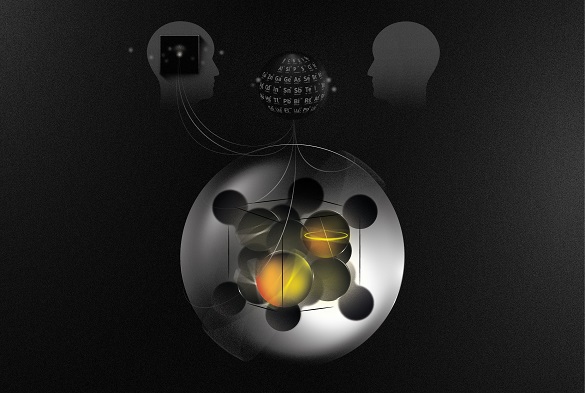
Researchers at the University of Liverpool have created a collaborative artificial intelligence tool that reduces the time and effort required to discover truly new materials.
Reported in the journal Nature Communications, the new tool has already led to the discovery of four new materials including a new family of solid state materials that conduct lithium. Such solid electrolytes will be key to the development of solid state batteries offering longer range and increased safety for electric vehicles. Further promising materials are in development.
The tool brings together artificial intelligence with human knowledge to prioritise those parts of unexplored chemical space where new functional materials are most likely to be found.
Discovering new functional materials is a high-risk, complex and often long journey as there is an infinite space of possible materials accessible by combining all of the elements in the periodic table, and it is not known where new materials exist.
The new AI tool was developed by a team of researchers from the University of Liverpool’s Department of Chemistry and Materials Innovation Factory, led by Professor Matt Rosseinsky, to address this challenge.
The tool examines the relationships between known materials at a scale unachievable by humans. These relationships are used to identify and numerically rank combinations of elements that are likely to form new materials. The rankings are used by scientists to guide exploration of the large unknown chemical space in a targeted way, making experimental investigation far more efficient. Those scientists make the final decisions, informed by the different perspective offered by the AI.
Lead author of the paper Professor Matt Rosseinsky said: “To date, a common and powerful approach has been to design new materials by close analogy with existing ones, but this often leads to materials that are similar to ones we already have.
“We therefore need new tools that reduce the time and effort required to discover truly new materials, such as the one developed here that combines artificial intelligence and human intelligence to get the best of both.
“This collaborative approach combines the ability of computers to look at the relationships between several hundred thousand known materials, a scale unattainable for humans, and the expert knowledge and critical thinking of human researchers that leads to creative advances.
“This tool is an example of one of many collaborative artificial intelligence approaches likely to benefit scientists in the future.”
Society’s capacity to solve global challenges such as energy and sustainability is constrained by our capability to design and make materials with targeted functions, such as better solar absorbers making better solar panels or superior battery materials making longer range electric cars, or replacing existing materials by using less toxic or scarce elements.
These new materials create societal benefit by driving new technologies to tackle global challenges, and they also reveal new scientific phenomena and understanding. All modern portable electronics are enabled by the materials in lithium ion batteries, which were developed in the 1980s, which emphasises how just one materials class can transform how we live: defining accelerated routes to new materials will open currently unimaginable technological possibilities for our future.
The paper `Element selection for crystalline inorganic solid discovery guided by unsupervised machine learning of experimentally explored chemistry’ (doi: 10.1038/s41467-021-25343-7) is published in the journal Nature Communications.
The research was supported by the Engineering and Physical Sciences Research Council, the Leverhulme Trust, and the Faraday Institution.
A collaboration between the University of Liverpool and Unilever, the Materials Innovation Factory brings together materials chemistry expertise with the latest computational methodology and robotic equipment to accelerate research and reduce the time it takes to develop new products which have the potential to address a range of societal challenges. For further information visit: liverpool.ac.uk/materials-innovation-factory/
The Leverhulme Research Centre for Functional Materials Design is an interdisciplinary centre at the University of Liverpool that brings together physical and computer science to transform the discovery of new materials. For further information visit: www.liverpool.ac.uk/leverhulme-research-centre/